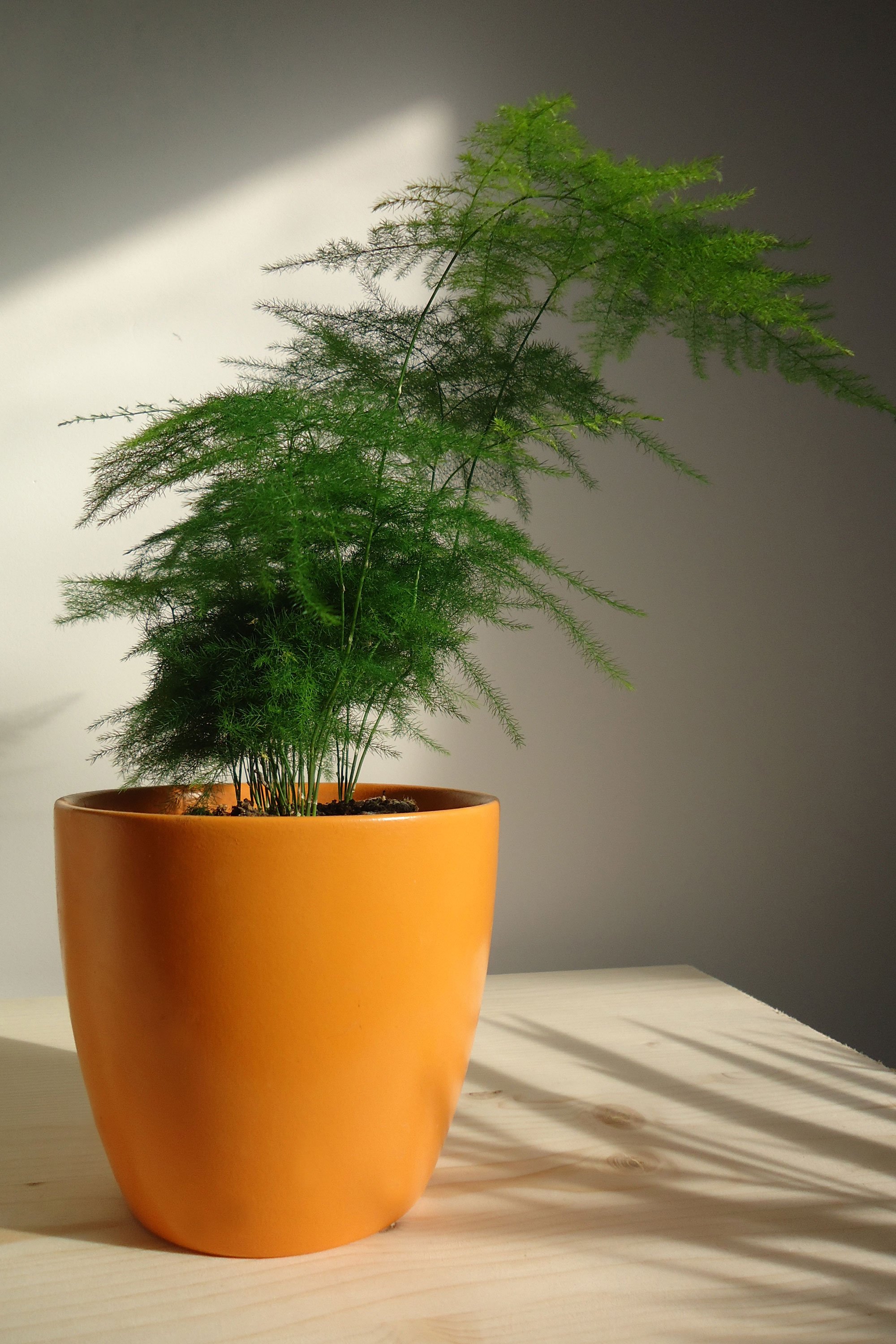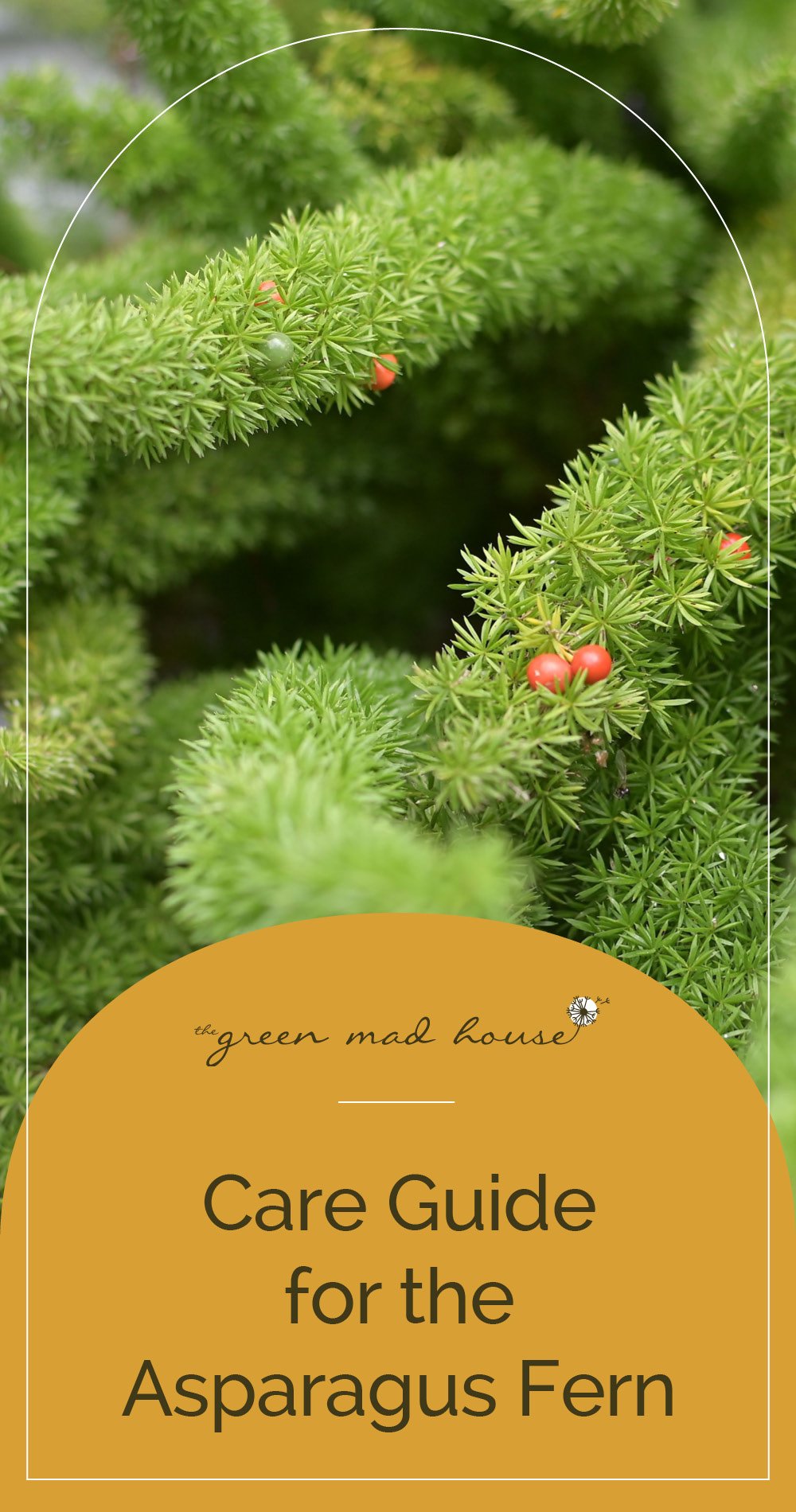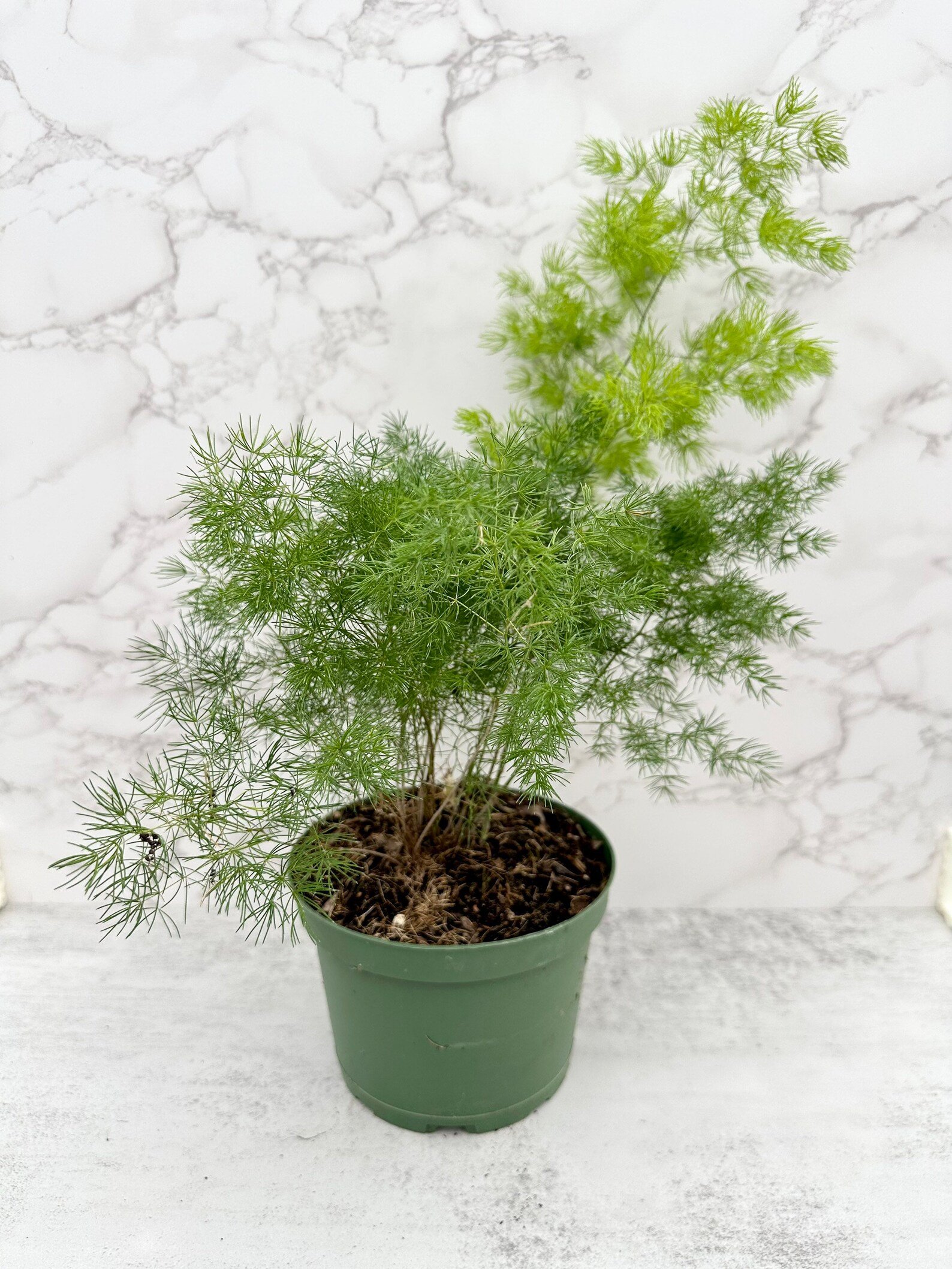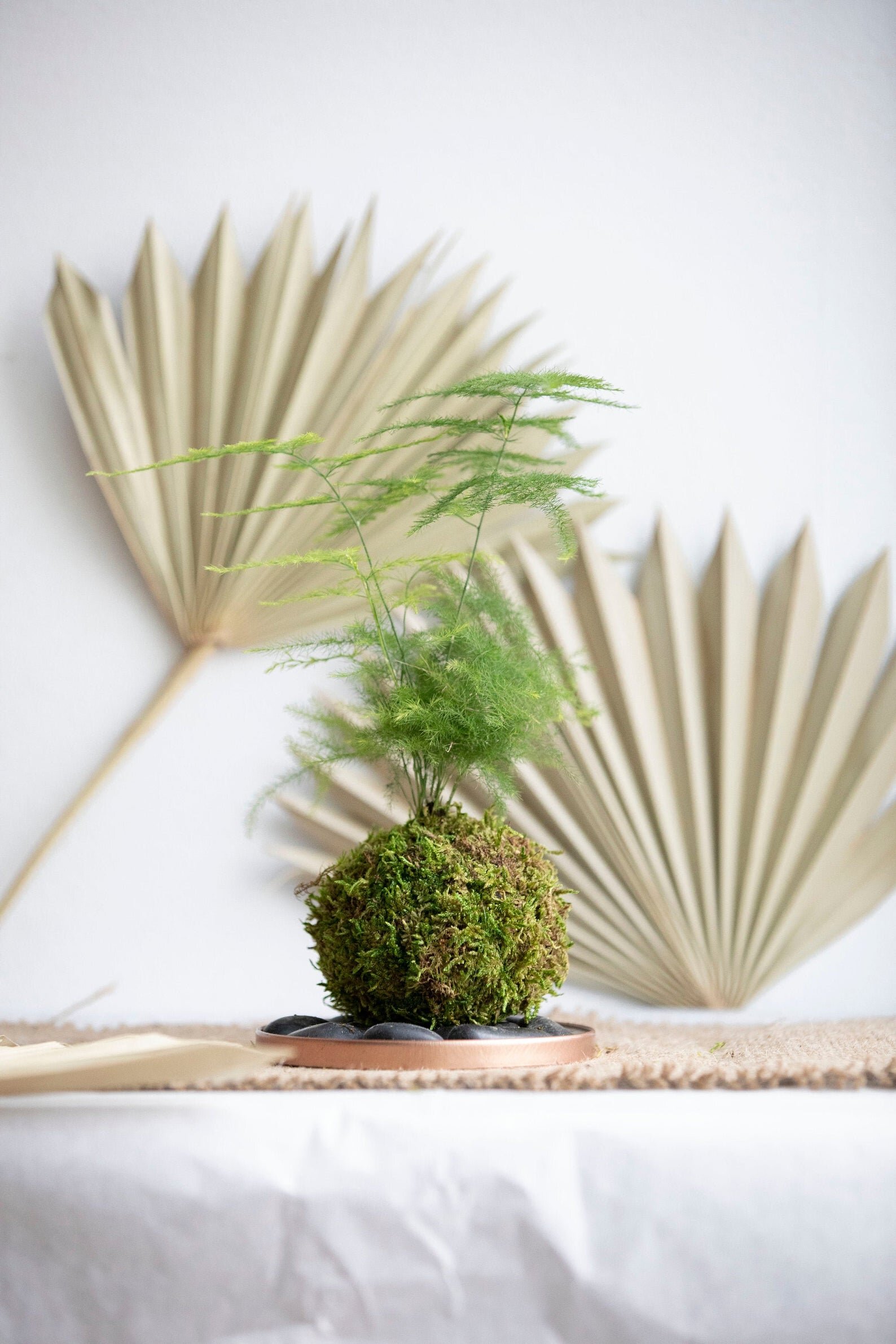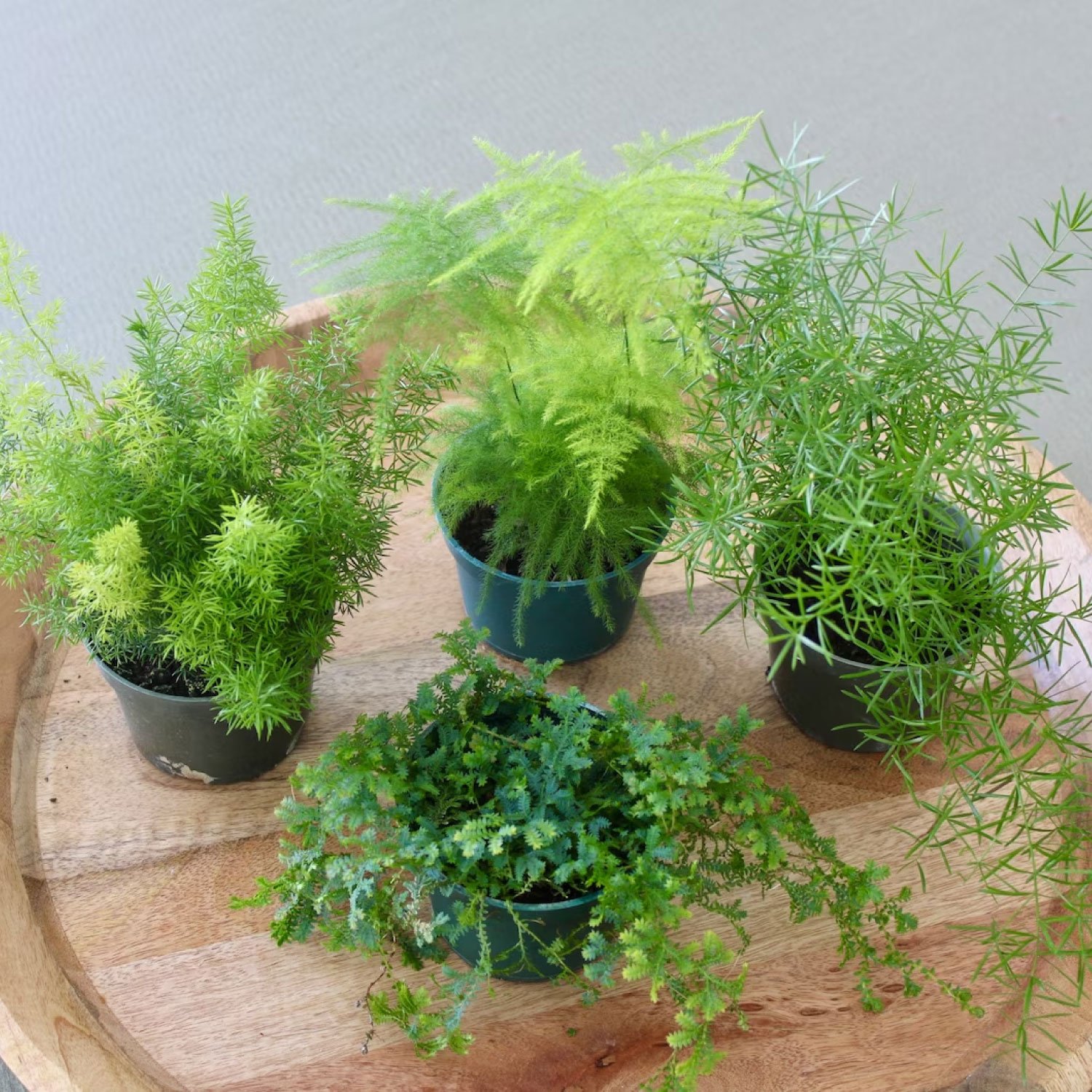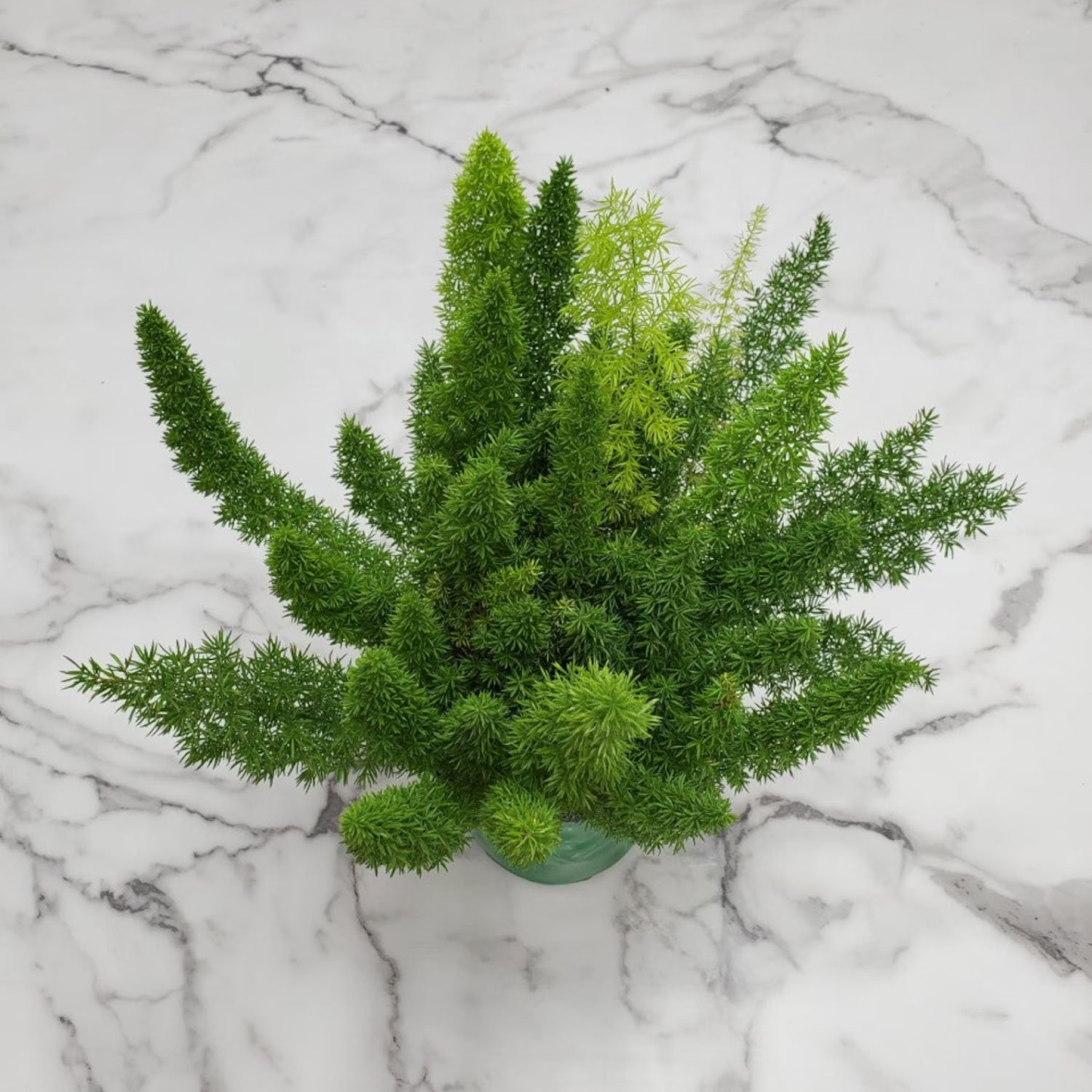Care Guide for the Asparagus Fern
As an Amazon and Etsy Associate I earn from qualifying purchases.
Asparagus Ming Fern
About the Asparagus Fern
Asparagus ferns are an easy to care for evergreen houseplant with feathery, fern-like, clumping leaves. Some of the most common types of Asparagus ferns are: foxtail, plumosa, ming and sprengeri. Despite their name, asparagus ferns are not actually ferns but instead perennial plants in the family Asparagaceae. They were named fern for their appearance but ferns reproduce via spores while Asparagaceae reproduce via seeds. I keep my Asparagus ferns in my bathroom for its high humidity. A couple of them hang in my shower which is perfect because they make ideal hanging plants and it keeps them out of reach of my cats.
Asparagus ferns have few requirements to make them healthy, happy and growing. A loose, airy potting mixture is essential with bright to medium indirect light. Keep humidity high and water when the soil dries out, which can happen faster than with your average plant, and you will have a fast growing fern. If you want to plant these outside their USDA zones are 9 to 11 however they can become invasive so its recommended you plant these in a container as opposed to the ground. Pot them in a sunny morning spot that turns to partial shade in the afternoon.
Varieties of Asparagus Fern
Asparagus ferns come in a few varieties but here are the 4 most common ones:
- Foxtail Fern (Asparagus densiflorus) - These are aptly named as their plumes resemble a bushy fox’s tail. Their leaves are light green, needle-like and look light and airy. They have tiny white flowers which turn into red berries. This variety gets quite large, over 2 feet tall and up to 4 feet wide.
- Sprengeri Fern (Asparagus densiflorus) - Sprengeri’s leaves are very dense, emerald green needles that look like a fern with a bad hair day. They too will get white blooms that turn into red berries and will reach about 3 feet in size.
- Plumosa Fern (Asparagus setaceus) - When someone says Asparagus fern this variety is what comes to mind. Most do not call it Plumosa but just call it the Asparagus fern. They have dark green, feathery leaves and look the most like ferns to me of this bunch. Everything about them makes you want to run your hands over their leaves as they are just so soft and delicate. Their new growth stretches straight up into the air and before they unfurl, look just like asparagus. The new growth then flattens out almost like awnings over the old growth. Their blooms are greenish-white and their berries turn black.
- Ming Fern (Asparagus retrofractus) - Ming ferns are like a mix of a foxtail and sprengeri and sometimes can be hard to differentiate since they are less common. Their leaves resemble clumps of pom poms and you will also hear it referred to as a pom pom fern. This plant is an edible vegetable and can get around 6 feet large. Ming fern’s branches grow in a zig zag pattern and although it appears super soft like the other Asparagus ferns, it has spikes on its stems.
How to Care for your Asparagus Fern
SOIL: The key to success of an Asparagus fern is a fast draining soil. There are a couple ways to do this:
Mix 1 part potting soil with one part perlite. While potting soil generally has perlite in it, we want to add more to increase aeration and improve drainage.
Asparagus ferns also like a loamy soil. You can make this by mixing 20% clay, 40% sand and 40% silt.
LIGHT: Asparagus ferns like bright indirect light. Too much hot sun and you can scorch their leaves, too little and it will yellow and drop needles. You can take 2 approaches when placing your asparagus ferns:
Place directly in an east facing window. It will love that soft morning sun. A north window MAY be enough light but just keep an eye on it and if it’s looking sad, move it too a brighter locale.
Place it to the side of or a few feet back from a south or west facing window. This is where indirect becomes important. These windows will get afternoon and evening sun which is very hot, especially in summer, and it can burn your plant.
HUMIDITY: Keep the humidity high! I have mine placed in my bathroom to make sure this need is met. If you cannot do that then buy a humidifier (this is mine), mist it daily, place it near other plants as that increases general humidity, or place the plant on a tray of pebbles and water.
WATER: Asparagus ferns like a very deep watering followed by letting them dry out. Check the top 2” of soil by sticking your finger in. If it is dry, water deeply so that water flows out the bottom into its saucer. Dump the water and place the saucer back under the plant.
Common Questions
PROPAGATION: Asparagus ferns have roots called tubers which are very thick and fleshy. This makes them easier to divide. When deciding to propagate make sure there are enough stems for each section (2-4) and enough thick tubers for each section with plenty of offshoots. Use your hands or pruning shears to gently divide the fern and repot each in fresh soil and water.
YELLOWING/DROPPING NEEDLES: This is one of the most common issues. Dropping needles can come from intense temperature changes so make sure your fern isn’t getting any drafts. Yellowing can come from too little light or overwatering. Check out the section above where we cover light and watering.
REPOTTING: Asparagus ferns grow pretty fast and need to be repotted once a year (check out this guide to repotting). Because their roots are thick tubers it can become quite obvious when you need to repot. The roots may start poking out the bottom of the pot or they may push the plant up and out of the pot. Another sign is that your water runs right through your plant and doesn’t seem to be getting absorbed. This means your pot is mostly root as compared to soil.
PESTS & DISEASES: Luckily these are not prone to pests and diseases. The two most likely are scale and mealy bugs. these can be treated with an insecticidal soap or, my favorite, neem oil.
PETS: All the varieties of Asparagus fern are toxic and cause lead to itchiness and throwing up. A lot of toxic plants my cats just ignore, but these are not one those, hence why they are hanging in my shower.
Asparagus ferns are one of those plant staples that I would recommend to any new plant parent or a seasoned collector. Their soft leaves and airy appearance are truly a crowd pleaser and a great option for that hanging basket you have laying around. Tag me on Instagram with your Fern babies @thegreenmadhouse and let me know if you have any questions below.

